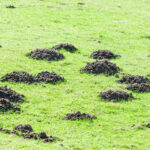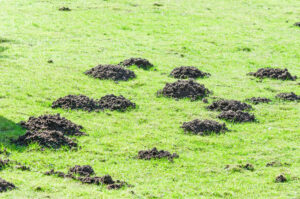
If you’ve noticed raised tunnels pushing up your lawn or soft, uneven ground under your feet, you might be dealing with moles. These underground diggers can turn a tidy yard into a mess fast. Setting up a good mole trap system is one of the most effective ways to stop the damage before it spreads any further. But it takes more than just dropping a trap in the ground. You need to understand what you’re up against and how to make each trap count.
Getting ahead of the problem with ground mole trapping gives you a better shot at protecting your yard all year long. Summer is usually a busy season when moles are active and feeding heavily, especially after rain has softened the soil. That’s why setting up traps the right way this time of year can make a big difference. If you’re looking to cut down the damage and get your yard looking right again, you’ll want to keep reading.
Understanding Mole Behavior
Before you start placing traps, you’ll want to understand what moles do and why. Moles are insectivores, meaning they eat bugs like grubs, worms, and beetles. They don’t eat plants, but the tunnels they make while searching for food can seriously wreck your landscaping. If you see dead grass in lines or mounds of soil called molehills, those are signs you’ve got some underground guests.
Moles create two main types of tunnels. Surface tunnels are just below the grass and are often easier to spot. These are used for hunting. Then there are deeper tunnels that are used for living and nesting. To figure out which tunnels are active, you can gently flatten a section and check back in a day or two. If it’s been pushed up again, you’ve got activity.
Certain times of year bring more movement. In summer, soil tends to stay soft, especially after it rains. That’s when moles move around more to find food. Drier months might slow them down, but as long as insects are around, moles can stick around too.
Some signs that suggest mole activity:
– Raised ridges across your lawn that feel springy when walked on
– Mounds of loose dirt that appear overnight
– Plants starting to droop despite being regularly watered
– Sections of lawn that begin to brown or sink
With this understanding, you’ll be better prepared to pick your traps and place them carefully.
Selecting the Right Mole Traps
There isn’t just one style of mole trap. In fact, you’ve got a few main options, and each works a little differently.
1. Scissor traps: These open and close like scissors, trapping the mole when triggered. They’re powerful and usually set into an active tunnel from above.
2. Choker loop traps: These use a wire loop to catch the mole as it passes through. They need to be placed in a narrow part of the tunnel and must be set gently so they don’t cave in the soil.
3. Harpoon traps: These have spikes that shoot downward when triggered by movement below. You’ll place these over a raised tunnel and wait for the mole to pass underneath.
When choosing the right trap, think about your soil and the kind of tunnels you’re seeing:
– For surface tunnels where the soil is loose, harpoon traps can be a good fit
– For deeper tunnels where you need to dig a little to set the mechanism, choker loops or scissor traps may be better
– If your lawn has rocky or clay-heavy soil, be extra careful with harpoon traps since they rely on pushing spikes downward
Picking the trap that matches your situation will improve the chances of success. One example might be a flat backyard with shallow tunnels where a harpoon trap catches moles within a day or two of placement. In contrast, if your yard has thick, packed soil, you might do better with a scissor trap dug directly into a deeper tunnel.
Proper Placement of Traps
Where you place the trap matters just as much as the trap you choose. If it’s not set in an active tunnel, it’s not going to catch anything. Moles don’t randomly roam throughout your yard. They follow specific feeding paths, and those tunnels can help you figure out where to strike.
The first step is finding an active tunnel. Pick a section of a raised tunnel and carefully press it down with your foot. Mark the area so you can find it again. Come back the next day. If that section has been pushed back up, you’ve got active traffic. That’s the spot to set your trap.
Once you identify the right location, proper trap placement is next:
1. Use a small shovel or spade to remove a piece of sod above the tunnel. Keep that chunk of turf handy to replace later
2. Dig just enough space to fit your trap snugly into the tunnel. Avoid making a big opening, as moles might avoid it
3. Set the trap according to the instructions for that type of device. Test the trigger to make sure it works smoothly
4. Replace the piece of sod on top to help conceal your setup and keep the area dark
5. Mark the spot discreetly with a flag or stick so you remember where you placed it
Check the trap once a day. If it hasn’t gone off after a few days, you might need to try another active tunnel. Moles move fast, but if the trap is in the right spot and working properly, it doesn’t usually take long to see results. Just remember to wear gloves when handling traps, both for safety and to avoid leaving human scent that might scare off moles.
Ensuring Safety and Effectiveness
Setting mole traps isn’t dangerous, but it requires care. Most traps have strong springs or sharp parts that can cause injury if mishandled. Always read instructions carefully and never leave traps where children or pets could reach them. Gloves aren’t just helpful for keeping your scent off the trap, they also keep your hands protected while setting or checking each one.
Once you start catching moles, don’t assume the job is done after one or two. Where there’s one, there’s a good chance others are nearby or passing through. Keep monitoring your lawn and checking for signs of fresh tunnel disturbance.
Here are a few tips to keep your lawn protected after trapping:
– Keep grass trimmed and clear away thick layers of mulch
– Water the lawn evenly so insects like grubs don’t cluster in one damp area
– Avoid over-watering, since soft soil can attract more mole activity
– Keep checking previously active zones every couple of weeks during the summer
Ground mole trapping works better when done consistently instead of just reacting when things get bad. Many people try one or two traps and give up too soon, only to end up with an even bigger problem later.
How Trap Your Moles Can Help
If setting traps and keeping track of mole tunnels feels time-consuming or tricky, that’s when it’s smart to bring in experts. Trap Your Moles offers professional ground mole trapping for homes and businesses, handling every part of the process with care.
Our experience with different soil types and regional mole behavior helps us find problem spots faster. We use time-tested trap methods to make sure the moles are caught quickly and humanely. By letting our team take over, you also avoid the hassle and reduce the risk of injury or damage from handling traps on your own.
We give clear updates, keep track of activity, and help you set up prevention strategies so moles don’t come back. Whether you’ve had ongoing problems or this is your first time dealing with moles, we’re here to help you get control of your yard again.
Say Goodbye to Costly Mole Damage
A solid mole trap system doesn’t need to be complicated. A good understanding of mole habits, picking the right traps for your yard, and setting them effectively all play a big role in stopping damage fast. It takes a bit of patience and effort upfront, but once the trap is in the right place, the difference is noticeable.
Summer is a smart time to act, especially when the soil stays damp and mole tunnels become more active. Keeping up with trap checks and watching for new activity throughout the season helps reduce the chance of bigger issues. Whether it’s your first time dealing with tunnel damage or it’s starting to feel like a familiar scene, the steps you take now can save you a lot of trouble later. Let Trap Your Moles help keep your lawn clear and mole-free.
If you’re ready to take control and protect your yard from mole invasions, explore the benefits of our ground mole trapping services. Trap Your Moles is here to help you keep your property safe and mole-free with proven methods that work fast and last. Reach out to learn how our team can make a difference for your lawn.






